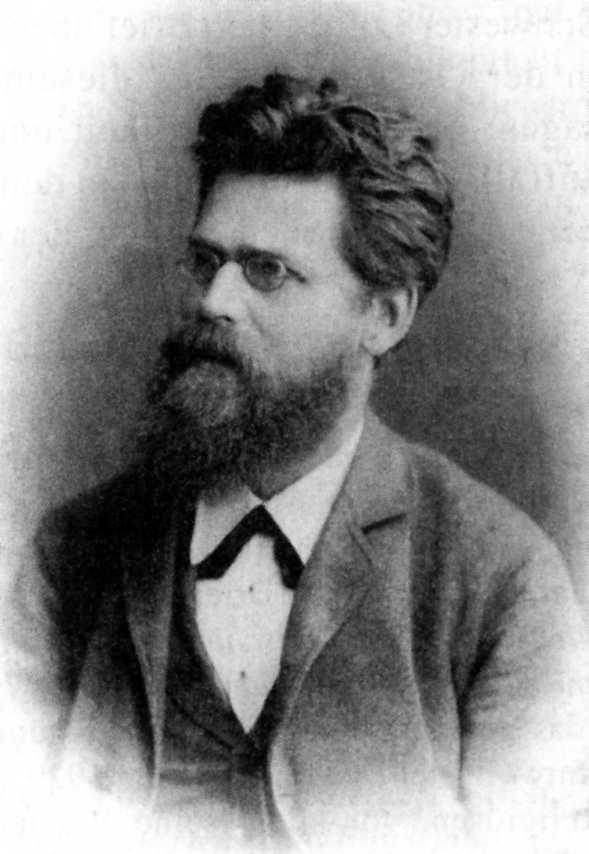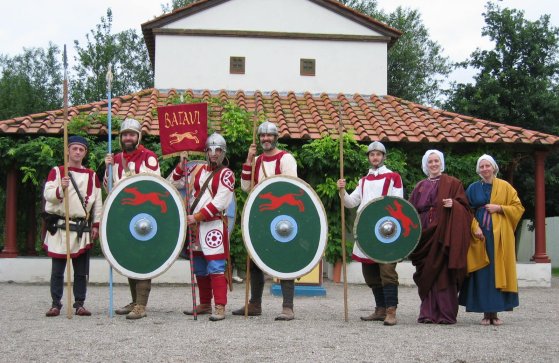|
Lucillianus (magister Equitum)
Lucillianus ( 350–363 AD) was a high-ranking Roman army officer and father-in-law of the emperor Jovian. He fought with success in the war against Persia, and played a part in the execution of the emperor Constantius II's cousin, Gallus. In 361, Lucillianus was kidnapped by the emperor Julian and forced into retirement. He was recalled to service after the accession of his son-in-law Jovian in 363, and given a senior military command, only to be murdered that same year by mutinous troops in Gaul. Biography Career under Constantius II Lucillianus was the father of Charito, wife of the Roman emperor Jovian (). He probably, like Jovian, came from the province of Pannonia. His hometown may have been Sirmium, Moesia Superior, where he was once stationed and later resided during his retirement. In 350, the emperor Constantius II () gave Lucillianus command of the war against the Sasanian Empire, and, in this capacity, he successfully defended the fortress of Nisibis against P ... [...More Info...] [...Related Items...] OR: [Wikipedia] [Google] [Baidu] |
Pannonia
Pannonia (, ) was a province of the Roman Empire bounded on the north and east by the Danube, coterminous westward with Noricum and upper Italy, and southward with Dalmatia and upper Moesia. Pannonia was located in the territory that is now western Hungary, western Slovakia, eastern Austria, northern Croatia, north-western Serbia, northern Slovenia, and northern Bosnia and Herzegovina. Name Julius Pokorny believed the name ''Pannonia'' is derived from Illyrian, from the Proto-Indo-European root ''*pen-'', "swamp, water, wet" (cf. English ''fen'', "marsh"; Hindi ''pani'', "water"). Pliny the Elder, in '' Natural History'', places the eastern regions of the Hercynium jugum, the "Hercynian mountain chain", in Pannonia and Dacia (now Romania). He also gives us some dramaticised description of its composition, in which the proximity of the forest trees causes competitive struggle among them (''inter se rixantes''). He mentions its gigantic oaks. But even he—if the passage in q ... [...More Info...] [...Related Items...] OR: [Wikipedia] [Google] [Baidu] |
Procopius (usurper)
Procopius (Ancient Greek: Προκόπιος) (c. 325/326 – 27 May 366 AD) was a Roman usurper against Valens, and a member of the Constantinian dynasty. Life Procopius was a native of Cilicia born in Corycus. On his mother's side, Procopius was a Greek, a maternal cousin, to Emperor Julian, since their maternal grandfather was Julius Julianus. His first wife was probably Artemisia, having married secondly the dowager Empress Faustina, while the Roman general of the 5th century Procopius and his son, the Emperor Anthemius, were among his descendants, the first being the son of his son Procopius. In 358, during the reign of Constantius II, he was sent with Lucillianus as an envoy to the Sassanid court; in this period he was ''tribunus'' and ''notarius''.Ammianus Marcellinus, XXVI.6.1. Procopius entered Julian's retinue and took part in his campaign against the Sassanids in 363. Together with Sebastianus he was entrusted with controlling the upper Tigris with 30,000 men a ... [...More Info...] [...Related Items...] OR: [Wikipedia] [Google] [Baidu] |
Otto Seeck
Otto Karl Seeck (2 February 1850 – 29 June 1921) was a German classical historian who is perhaps best known for his work on the decline of the ancient world. He was born in Riga. He first began studying chemistry at the University of Dorpat but transferred to the University of Berlin to study classical history under Theodor Mommsen. Seeck earned his doctorate from the University of Berlin in 1872 after writing his thesis on the '' Notitia Dignitatum'', a document enumerating the roles and responsibilities of administrative officials of the later Roman empire c. 400 AD. He habilitated under Mommsen in Berlin in 1877 and, with the help of Mommsen, secured a post at the University of Greifswald in 1881, where he taught Roman History and Archaeology. There he met Karl Julius Beloch. In 1907 he went to the University of Münster where he continued teaching and writing. Seeck wrote many influential works on late antiquity and social Darwinism. He was widely published in such acade ... [...More Info...] [...Related Items...] OR: [Wikipedia] [Google] [Baidu] |
Valentinian I
Valentinian I ( la, Valentinianus; 32117 November 375), sometimes called Valentinian the Great, was Roman emperor from 364 to 375. Upon becoming emperor, he made his brother Valens his co-emperor, giving him rule of the eastern provinces. Valentinian retained the west. During his reign, Valentinian fought successfully against the Alamanni, Quadi, and Sarmatians. Most notable was his victory over the Alamanni in 367 at the Battle of Solicinium. His general Count Theodosius defeated a revolt in Africa and the Great Conspiracy, a coordinated assault on Roman Britain by Picts, Scots, and Saxons. Valentinian was also the last emperor to conduct campaigns across both the Rhine and Danube rivers. Valentinian rebuilt and improved the fortifications along the frontiers, even building fortresses in enemy territory. He founded the Valentinianic dynasty, with his sons Gratian and Valentinian II succeeding him in the western half of the empire. Early life Valentinian was born in 32 ... [...More Info...] [...Related Items...] OR: [Wikipedia] [Google] [Baidu] |
Batavi (military Unit)
The ''Batavi'' was an ''auxilia palatina'' (infantry) unit of the late Roman army, active between the 4th and the 5th century. It was composed by 500 soldiers and was the heir of those ethnic groups that were initially used as auxiliary units of the Roman army and later integrated in the Roman Empire after the ''Constitutio Antoniniana''. Their name was derived from the people of the Batavi. In the sources they are usually recorded together with the ''Heruli'', and it is probable the two units fought together. At the beginning of the 5th century two related units are attested, the ''Batavi seniores'' and the ''Batavi iuniores''. History ''Batavi'' The ''Batavi'' belonged to the army of the emperor Julian, and fought in the Battle of Strasbourg (357). Deployed in the second line, together with the ''Regii'', the ''Batavi'' sustained the assault of the outnumbering Alamannic infantry, which had broken the Roman first line. Pushed back until the hill where the Roman camp ... [...More Info...] [...Related Items...] OR: [Wikipedia] [Google] [Baidu] |
Gallia Belgica
Gallia Belgica ("Belgic Gaul") was a province of the Roman Empire located in the north-eastern part of Roman Gaul, in what is today primarily northern France, Belgium, and Luxembourg, along with parts of the Netherlands and Germany. In 50 BC, after the conquest by Julius Caesar during his Gallic Wars, it became one of the three parts of Gaul (Tres Galliae), the other two being Gallia Aquitania and Gallia Lugdunensis. An official Roman province was later created by emperor Augustus in 22 BC. The province was named for the Belgae, as the largest tribal confederation in the area, but also included the territories of the Treveri, Mediomatrici, Leuci, Sequani, Helvetii and others. The southern border of Belgica, formed by the Marne and Seine rivers, was reported by Caesar as the original cultural boundary between the Belgae and the Celtic Gauls, whom he distinguished from one another. The province was re-organised several times, first increased and later decreased in size. Diocl ... [...More Info...] [...Related Items...] OR: [Wikipedia] [Google] [Baidu] |
Jovinus (consul)
Flavius Jovinus (around 310-370 AD), was a Roman general and consul of the Western Roman Empire. He was of Gaulic or Germanic origin, born and buried in Durocortorum (present day Reims). He was named Magister equitum in Gaul by emperor Julian. He became magister militum under emperor Jovian (363-364), kept his rank under Valentinian I (364-375), and pushed back several incursions of the Alemanni such as the one in 366 in Scarponna (Dieulouard). In 367 he became consul. Biography Jovinus was named Magister equitum (head of cavalry) in Gaul by emperor Julian. When in 363 emperor Jovian wants to replace him by one of his own men, Jovinus is proclaimed (emperor ???) by the legions in Gaul, but he refuses the purple and calms his troops. A grateful Jovian reinstates him as ''magister militum'' (top military commander). On three occasions in 366, he gave battle to the Allemanni that had crossed the Rhine: in '' Scarponna'' (Dieulouard), on a river Ammianus Marcellinus, R ... [...More Info...] [...Related Items...] OR: [Wikipedia] [Google] [Baidu] |
Praetorian Prefecture Of Gaul
The Praetorian Prefecture of Gaul ( la, praefectura praetorio Galliarum) was one of four large prefectures into which the Late Roman Empire was divided. History The prefecture was established after the death of Constantine I in 337, when the empire was split up among his sons and Constantine II received the rule of the western provinces, with a praetorian prefect as his chief aide. The prefecture comprised not only Gaul, but also of Roman Britain, Spain, and Mauretania Tingitana in Africa Proconsulare. Its territory overlapped considerably with what was once controlled by the short-lived Gallic Empire in the 260s. After the permanent partition of the Empire in 395 into West and East spheres of control, the prefecture of Gaul continued to belong to the Western Roman Empire. ''Augusta Treverorum'' (present-day Trier in Germany) served as the prefecture's seat until 407 (or, according to other estimates, in 395), when it was transferred to ''Arelate'' (Arles). The prefecture ... [...More Info...] [...Related Items...] OR: [Wikipedia] [Google] [Baidu] |
Mediolanum
Mediolanum, the ancient city where Milan now stands, was originally an Insubrian city, but afterwards became an important Roman city in northern Italy. The city was settled by the Insubres around 600 BC, conquered by the Romans in 222 BC, and developed into a key centre of Western Christianity and informal capital of the Western Roman Empire. It declined under the ravages of the Gothic War, its capture by the Lombards in 569, and their decision to make Ticinum the capital of their Kingdom of Italy. During the Principate the population was 40,000 in AD 200; when the city became capital of the Western Roman Empire under emperor Maximian (r. 286–305), the population rose to 100,000 people and thus Milan became one of the largest cities in Roman Italy. History Mediolanum appears to have been founded around 390 BC by the Celtic Insubres, after whom this region of northern Italy was called Insubria. According to the legend reported by Livy, the Gaulish king Ambicatus sent h ... [...More Info...] [...Related Items...] OR: [Wikipedia] [Google] [Baidu] |
Praetorian Prefecture Of Italy
The praetorian prefecture of Italy ( la, Praefectura praetorio Italiae, in its full form (until 356) ) was one of four praetorian prefectures into which the Late Roman Empire was divided. It comprised the Italian peninsula, the Western Balkans, the Danubian provinces and parts of North Africa. The Prefecture's seat moved from Rome to Milan and finally, Ravenna. Structure and history The prefecture was established in the division of the Empire after the death of Constantine the Great in 337, and was made up of dioceses. Initially these were the Diocese of Africa, the Diocese of Italy, the Diocese of Pannonia, the Diocese of Dacia and the Diocese of Macedonia (the last two were until c. 327 united in the Diocese of Moesia). Eventually the Diocese of Italy was split in two, the Diocese of Suburbicarian Italy (''Italia suburbicaria'': "Italy under the City", also referred to as "Diocese of the City of Rome") and the Diocese of Annonarian Italy (''Italia annonaria'': "provision ... [...More Info...] [...Related Items...] OR: [Wikipedia] [Google] [Baidu] |





